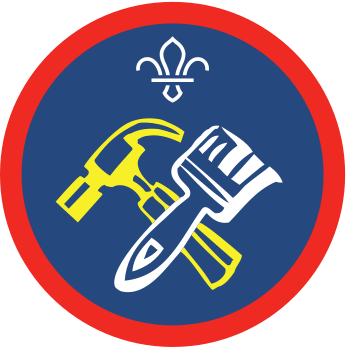Drip detectives
You’ll need
- Tables
- Access to water
- Buckets
- Towels
- Large jugs or watering cans
- One 4 feet x 3 feet length of drainpipe, with one end sealed
- Drill, with different-sized bits suitable for boring holes in drainpipe
- A selection of items for plugging holes
- A selection of floats, like balls or rubber ducks
- Amalgamating tape
Before you begin
- Check that the bottom end of your length of drainpipe is water-tight.
- Drill some holes in your length of drainpipe. These need to be all the way up and along the pipe at intervals, and should be different sizes and, if possible, shapes. This should be done by an adult or with adult supervision.
- When you’re happy with your leaky pipe, place it sealed-end down in a bucket on the floor and put down towels. Put a float (a ball or rubber duck, perhaps) into the pipe so that it drops all the way to the bottom.
- Set out some potential hole-plugging items or materials on a table. You could use paper, rocks, plasticine, tape, balloons, toilet roll tubes and other craft materials lying around.
Plug it
- Everyone should get into small groups of no more than five people. Each group should take some time to examine the materials on the table. Explain to everyone that they need to find items to plug the holes in the pipe so that, when it’s filled up with water, they can retrieve an item stuck in the bottom.
- One group at a time should try and plug all the holes. The person leading the activity should pour water from a jug or watering can into the pipe to see if the plugs hold. When the float rises and moves to the open end of the pipe, one person in that group should try to grab it.
- If someone succeeded, drain the remaining water and discuss which plugs were most effective. You could also run the game again to see who can grab the float the greatest number of times. If no-one succeeded and the plugs didn’t hold, everyone should try again.
- Demonstrate and then let everyone try to patch the pipe with amalgamating tape, which should provide a more permanent solution to leaks.
Reflection
The aim of the game was to patch up all the holes in the pipe to retrieve the object from the bottom. Everyone needed to put their heads together and think about the materials available and how they can be used effectively. Which materials worked best and which didn’t work at all? Did anything work well enough that you could potentially use to temporarily fix a pipe, perhaps to stop the leak long enough to find a more permanent fix?
Safety
All activities must be safely managed. You must complete a thorough risk assessment and take appropriate steps to reduce risk. Use the safety checklist to help you plan and risk assess your activity. Always get approval for the activity, and have suitable supervision and an InTouch process.
- Poles and long objects
Be careful when moving poles or long items. Take care if the ends are sharp. Have appropriate supervision for this activity.
- Heavy and awkward objects
Never lift or move heavy or awkward items alone. Ask for help or, if possible, break them down into smaller parts.
- Glue and solvents
Always supervise young people appropriately when they’re using glue and solvent products. Make sure there’s plenty of ventilation. Be aware of any medical conditions that could be affected by glue or solvent use and make adjustments as needed.
- Water games and activities
Be careful when doing activities with, in, or near water. Check surfaces and reduce the risk of slipping where possible. Make sure you have appropriate supervision for this activity.
If groups are struggling to seal the pipe, demonstrate how amalgamating tape, pipe repair clamps and push-fit fittings can be used to fix holes. The difficulty of this task depends on the number of items or kind of materials available to the groups. You could make things easier or harder with different-sized pipes, or by using a pipe made of metal.
Anyone who struggles with textures could help in another way, by pouring the water or filling the jugs.
All Scout activities should be inclusive and accessible.
Using a standard sized plumbing pipe (3/8” to 1”), drill a hole in it and practise and demonstrate the correct procedures for fixing the pipe. This can involve using amalgamating tape, epoxy putty or pipe clamps. Have a look here for some helpful tips.
Try to find a way to re-purpose the pipe you’ve used. It might be a nice feature in a flower or herb garden, to help with irrigation or a support for climbing plants.
Give young people the chance to drill the holes in the pipe, with appropriate supervision. They should be confident in the young person’s ability to use the drill. Everyone should also come up with their own solutions for solving a leak, discovering which materials work best on their own.


